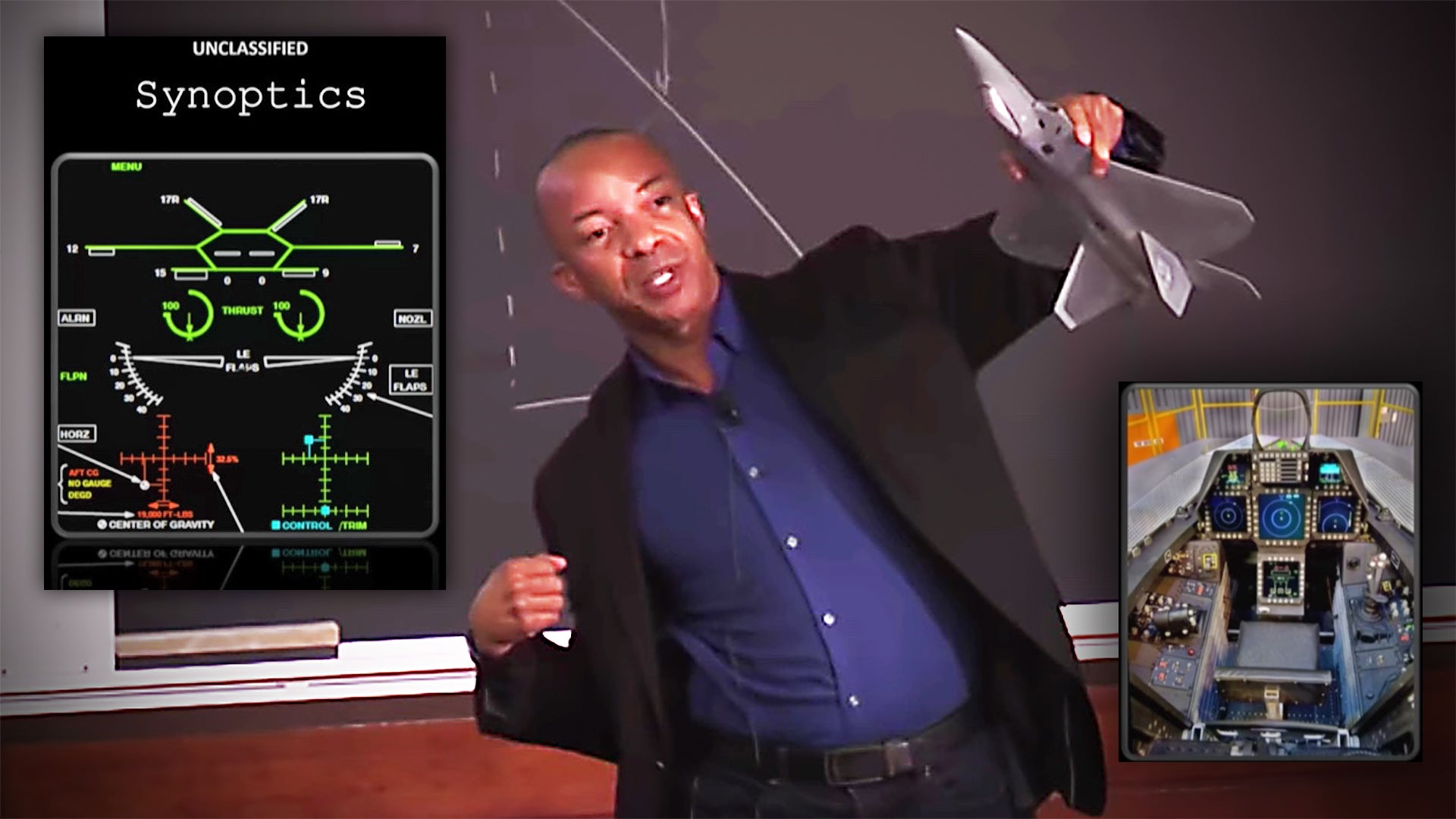Lt. Col. Randy “Laz” Gordon is an accomplished test pilot, engineer, and F-22 Raptor squadron commander who lent his expertise about all things aviation, and especially about the F-22’s incredible fly-by-wire flight control system, to students taking MIT’s Private Pilot Ground School in 2019. His lecture is astonishingly accessible considering the complexities of the systems and concepts he describes and will give anyone a remarkable appreciation for just how incredible the super-maneuverable Raptor’sflight control system really is.
Gordon covers so much ground in his talk. He talks about the constant tension between low-observability (stealth) and aerodynamics that resulted in the F-22’s design, the massive loads the Raptor’s powerful flight control system and its huge control surfaces have to instantly counteract, how supersonic flight requires unique flight control concepts, and even how permanent magnetic generators keep power running to the F-22’s flight controls just by having the engines windmill.
There is truly an astonishing amount of information in this presentation and it also acts as a great primer for anyone who is new to the concept of fly-by-wire flight control systems.
Some other interesting tidbits include:
- Raptor pilots make sure their hands are off the flight controls and visible when ground crews are working around a running jet because one touch of the stick could cause the 4,000psi hydraulic system to send a control surface into deflection which can decapitate a ground crewman.
- Although the F-22’s high altitude capabilities, partially a product of its thrust vectoring capabilities, are known, Gordon notes the aircraft flies at altitudes from 60,000-65,000 feet.
- He describes the pressure-sensitive sidestick control concept, which moves less than a half-inch, very well. The concept was pioneered by the F-16, with the YF-16’s sidestick not moving at all before changes were made.
- The flight controls page on the F-22’s multi-function-display is really well described here. The level of automation and simple symbology to describe complex issues is remarkable.
- The F-22 knows it is about to take off and automatically reconfigures the plane for departure. It does the same upon touchdown.
- Multiple other automation flight logic modes, in which the flight control system sets to totally different parameters, exist. This is not uncommon on other fly-by-wire aircraft, like airliners, but the F-22’s huge flight envelope makes them far more pronounced.
- There is a mode for aerial refueling to give the jet the best fine handling behind the tanker.
- In aerial combat mode, you put pressure on the stick and it locks in a G-rate for a turn and stays there even if you take your hand off the stick.
- When landing, it goes into a pitch command mode, where the pilot simply directs the pitch of the aircraft and it stays there.
- A large number of limiters are used to make sure the jet is not capable of being structurally overloaded and it even automatically unloads individual parts of the aircraft during certain maneuvers by using flight control surfaces non-traditionally.
- When an F-22 drops a weapon, namely a 1,000lb JDAM, fuel automatically sloshes forward to maintain center of gravity. There is no fuel panel on the jet to command this, it is all part of the control logic.
Check out the whole video for yourself below:

Although it is not formally talked about in the presentation, as we have discussed in the past, low-observability is also factored into flight control systems on stealthy aircraft. This would be yet another layer to the F-22’s flight control programming.
What parts did you find interesting? Let us know in the comments below!
Author’s note: A big thanks to David Williams for sending this little gem over.
Contact the author: Tyler@thedrive.com
